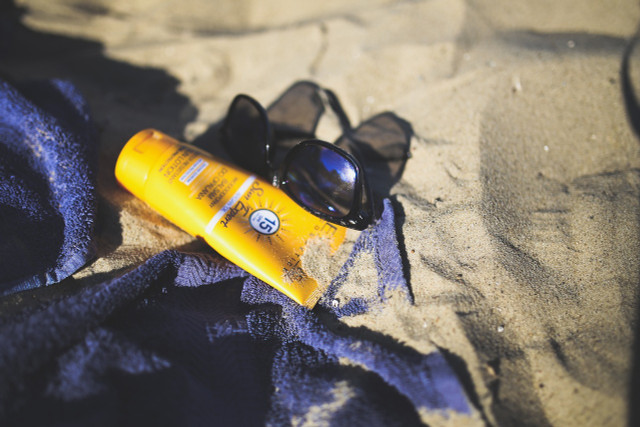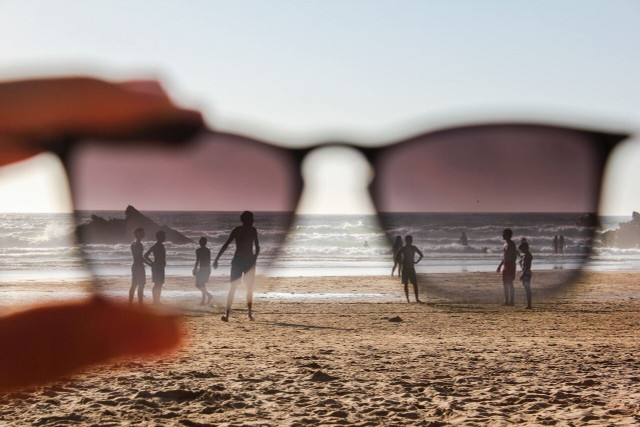
The UV index provides important information on how you can protect yourself against dangerous UV radiation. You can check it for every day in weather apps, for example.
You probably check your weather app regularly in the morning to find out about the temperatures, the hours of sunshine or the probability of rain during the day. Even if the weather forecasts are rarely accurate, they can, for example, be a guide to choosing the right clothes. An often overlooked but very important piece of information in your weather app is the UV index.
Why you should check the UV index

(Photo: CC0 / Pixabay / kaboompics)
When the weather app shows a lot of hours of sunshine, the joy is usually great: The sun lifts the spirits and makes you want to spend a lot of time outside. However, due to their ultraviolet radiation, this is associated with health risks.
In addition to visible light, the sun also emits invisible UV radiation. This consists of UV-A and UV-B rays, among other things, which penetrate the skin and can lead to premature skin aging and sunburn – and this increases the likelihood of developing skin cancer.
To protect yourself from dangerous UV radiation, you should, for example, apply sunscreen correctly and even avoid the sun around midday. You can determine when and how much protection from the sun’s rays is necessary from the UV index for each day.
Where you can find the daily UV index: in some weather apps, but also in the UV danger index of the German Weather Service (DWD).
What does the UV index say?

(Photo: CC0 / Unsplash / Point Blanq)
According to the Federal Office for Radiation Protection (BfS), the UV index indicates the daily peak value of sunburn-causing UV radiation expected on the ground. The higher the UV index, the faster sunburn can occur on unprotected skin.
The UV index scale starts at one and is open-ended. How high the UV index is depends on many influencing factors, in particular on
- position of the sun,
- Season,
- time of day,
- the geographical latitude and the
- total ozone concentration in the atmosphere,
- the cloudiness and
- the altitude of a place.
You can find more tips about sunburn in our guides:
- Treating sunburn: Natural home remedies
- Preventing sunburn: 10 tips you should know
- Treat sunburn on face
- Sunburn on the scalp: That helps
- Snow blindness: prevention and treatment of sunburn in the eyes
- Sunbathing: 5 Mistakes Too Many Make Every Summer
Important to know: A cloudy sky gives many a false sense of security. Just because the sun is covered by clouds does not mean that no solar radiation reaches the earth. In fact, according to the BfS, particularly cloudy conditions can even lead to additional scattered radiation, which can briefly increase the UV index compared to that of a clear sky.
Which sun protection with which UV index?

(Photo: CC0 / Pixabay / thatsphotography)
So even if the morning check of the weather app shows that it will be cloudy, you should not assume that there is no danger from UV radiation. In addition, always check the UV index and follow the sun protection recommendations applicable to each value:
UV Index 1-2
- low load
- No action is required
UV index 3-5
- medium load
-
Shelter needed: seek shade during midday hours; wear appropriate clothing, hat and sunglasses; use sunscreen with an adequate sun protection factor for uncovered skin
UV index 6-7
- high load
-
Shelter needed: seek shade during midday hours; wear appropriate clothing, hat and sunglasses; use sunscreen with an adequate sun protection factor for uncovered skin
UV index 8-10
- very high load
-
Protection absolutely necessary: if possible, do not stay outside at lunchtime; definitely seek shade; Appropriate clothing, hat, sunglasses and sunscreen with a sufficient sun protection factor are urgently needed
UV index 11 and higher
- extreme stress
-
Protection absolutely necessary: if possible, do not stay outside at lunchtime; definitely seek shade; Appropriate clothing, hat, sunglasses and sunscreen with a sufficient sun protection factor are urgently needed
In our sunscreen guides you will find many useful tips for choosing the right sun protection:
- Organic sunscreen: effective protection without risk?
- Sunscreen at Stiftung Warentest & Öko-Test: All test winners
- Sunscreen for children in the test: the test winners 2023
Read more on Techzle.com:
- Sun protection for the baby: everything you need to know for the trip outdoors
- UV protective clothing: The more environmentally friendly sun protection?
- Ozone levels: Where can I find the latest figures for my region?